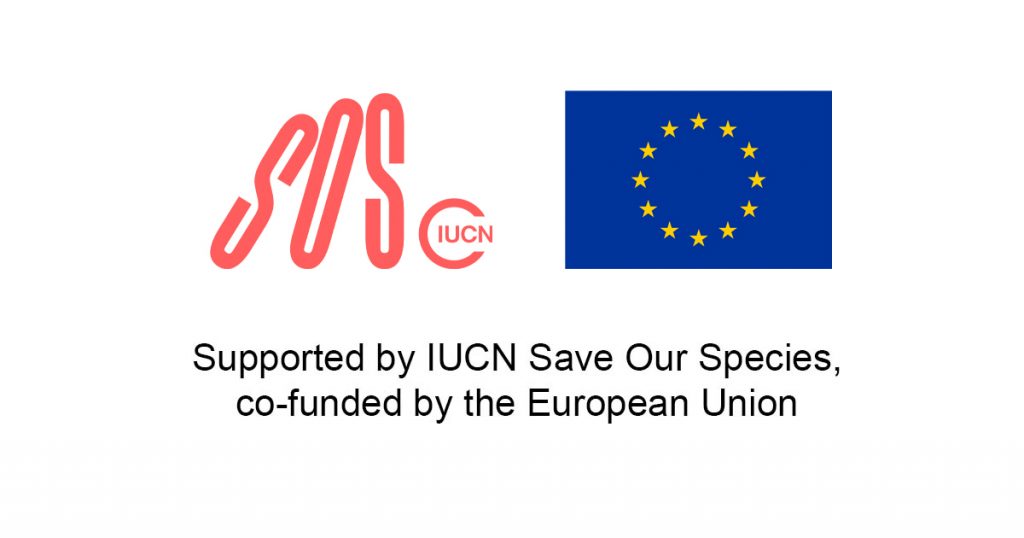Supported by IUCN Save Our Species and co-funded by EU International Partnerships The Selati Wilderness Foundation’s project, “Monitoring and Protection of Biodiversity on Selati Game Reserve” is now complete having run its course from December 2021 to December 2022.
The project focussed on monitoring and protecting the four below threatened species;
Infrastructure
With this support from the IUCN Save Our Species grant, we were able to build and equip a 24/7 Security Operations Room and deploy a mobile picket unit to assist anti-poaching foot patrol teams. In total, 4 Environmental Monitors were employed to monitor the 24/7 Security Operations Room equipped with 3 screen monitors and 2 UPS devices in addition, 4 Counter Poaching Field rangers were contracted to boost the reserves field rangers.
Two additional LoRa towers were erected in the central and southern part of the reserve, resulting in coverage of approximately 90% of the reserve, comparative to the lower coverage reflected in July 2021. These LoRa towers are critical in the monitoring of Selati’s Black Rhino, Cheetah and other endangered species.
Black Rhino, Diceros bicornis, IUCN Status – Critically Endangered
In partnership with the WWF Black Rhino Range Expansion Project (BRREP) the IUCN Save Our Species grant facilitated the employment of a dedicated Rhino Monitor who engaged with a variety of technologies (camera traps, foot collars, horn pods, drone etc.) to assist her with increased methods of monitoring of both black and white rhino on Selati Game Reserve. During the dehorning of all of Selati’s rhino, various tracking devices were affixed to the population to allow efficient monitoring.
With the combined increase in security and surveillance, the reserve have had zero rhino poaching incidences over the last 28 months.
Southeast African Cheetah, Acinonyx jubatus jubatus, IUCN Status – Vulnerable
Two of Selati’s cheetahs were fitted with LoRa collars which enabled monitoring of their locations as the collars “pinged” a GPS location every hour. With an increased ability to monitor our cheetah, in July 2022 we released our Selati Conservation YouTube Series with our first episode being about Cheetah Conservation. The 10-minute-long episode gives deeper insights into the conservation efforts of Selati Game Reserve regarding their cheetah population. Viewers get an exclusive insight of the behind the scenes of a cheetah collaring and learn a lot about their red list status.
Lillie Cycad, Encephalartos dyerianus, IUCN Status – Critically Endangered
10 WPS Camera Traps funded by the IUCN Save Our Species grant were deployed and were monitored via phone and the operations room 24/7 sending instant images when an unknown person passes by them.
As a result of the WPS camera traps we were able to prevent poaching of the Encephalartos dyerianus cycads, when a group was detected (picture on the left) attempting to remove a mature cycad. One poacher was arrested. The picture on the right represents the cycads that were recovered.
Temminck’s Ground Pangolin, Smutsia temminckii, IUCN Status – Vulnerable
An increase in camera traps deployed allowed for us to monitor these elusive species. Fences under maintenance hindered our ability to bring new “rescued” pangolin onto Selati. However, no pangolins were poached from the property, and they were seen and recorded by the Counter-Poaching Unit (CPU) when on patrol. The fences are currently being upgraded and replaced so that they comply with the requirements for pangolin releases and to prevent electrocution on the trip wire.
Hemmersbach Rhino Force CPU conducted one arrest outside of Selati Game Reserve where one live pangolin was confiscated.
